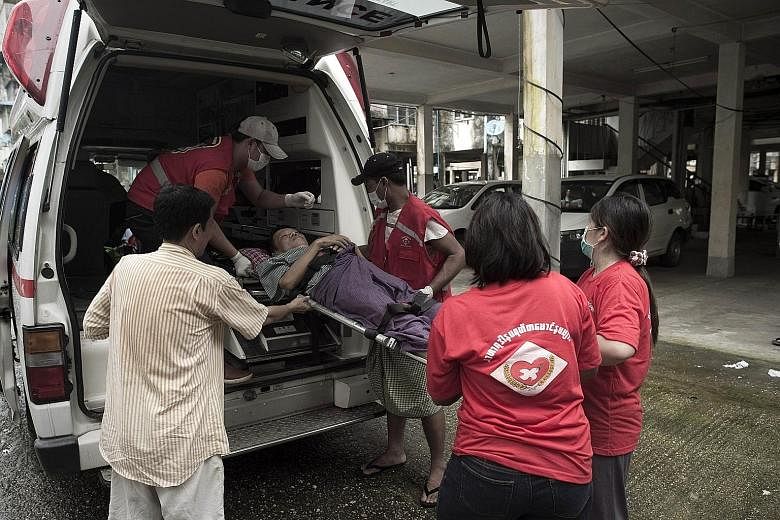YANGON • With lights flashing and sirens blaring, volunteer ambulance driver Myint Hein weaves through traffic-choked Yangon, a lifeline in Myanmar where healthcare was crippled by decades of chronic underfunding during junta rule.
Emergency services were one of the many casualties of meagre public spending, and the retired bus driver is helping to plug gaps in a country that still lacks a centralised ambulance system.
"I saw some people die before they could reach the hospital because there was no timely transportation or ambulance," the 54-year- old said, recounting accidents he frequently encountered on the lengthy Yangon-Mandalay highway.
Now a volunteer at Noble Heart, a local non-governmental organisation providing free ambulance services in Yangon since January, he is trying to bolster the motley smattering of state- and charity-run vehicles serving his fast-growing city, where people normally turn to family or friends during medical emergencies. This culture of self-reliance is partially a legacy of the military era where vast spending on defence came at the expense of health or education.
While budgets have increased since the end of outright army rule in 2011, Myanmar - the world's fourth-fastest growing economy - is still one of the lowest spenders on healthcare as a share of gross domestic product (GDP).
According to the latest World Bank figures, health spending rose from 0.2 per cent to just over 1 per cent of GDP from 2009 to 2013. In contrast, 4.3 per cent of GDP last year went to the military, according to the Stockholm International Peace Research Institute.
Small groups like Noble Heart have their hands full. Most of the ambulances on Myanmar's roads are only basically equipped, offering more of a transport service than full-fledged emergency care.
It is a hole the quasi-civilian government is finally paying attention to in a crucial election year where it is facing off against Ms Aung San Suu Kyi's opposition party, which is expected to make vast gains if the Nov 8 polls are fair.
"We have ambulances but they are not fully equipped. People who use them are not trained, it's just transport. There's no system at all," said associate professor Maw Maw Oo at Yangon General Hospital's emergency medicine department.
Until 2012, Myanmar "didn't have emergency care", he said, pointing to the launch of his own department as well as a new diploma in the subject and emergency medicine posts.
This year, the country will welcome its first fleet of 230 emergency ambulances, aiming to roll out services starting with the main highway before expanding to Naypyitaw, Yangon and Mandalay, the doctor added. There are also plans to launch a hotline and train the country's first-ever paramedics.
For now, the wealthy and even lower-income families who can cobble together the cash, escape across the border to Thailand or go to Singapore for their healthcare needs, especially for harder-to-treat diseases such as cancer.
For the poor, even death comes at a hefty price, with families sometimes left in debt by funeral costs.
AGENCE FRANCE-PRESSE

